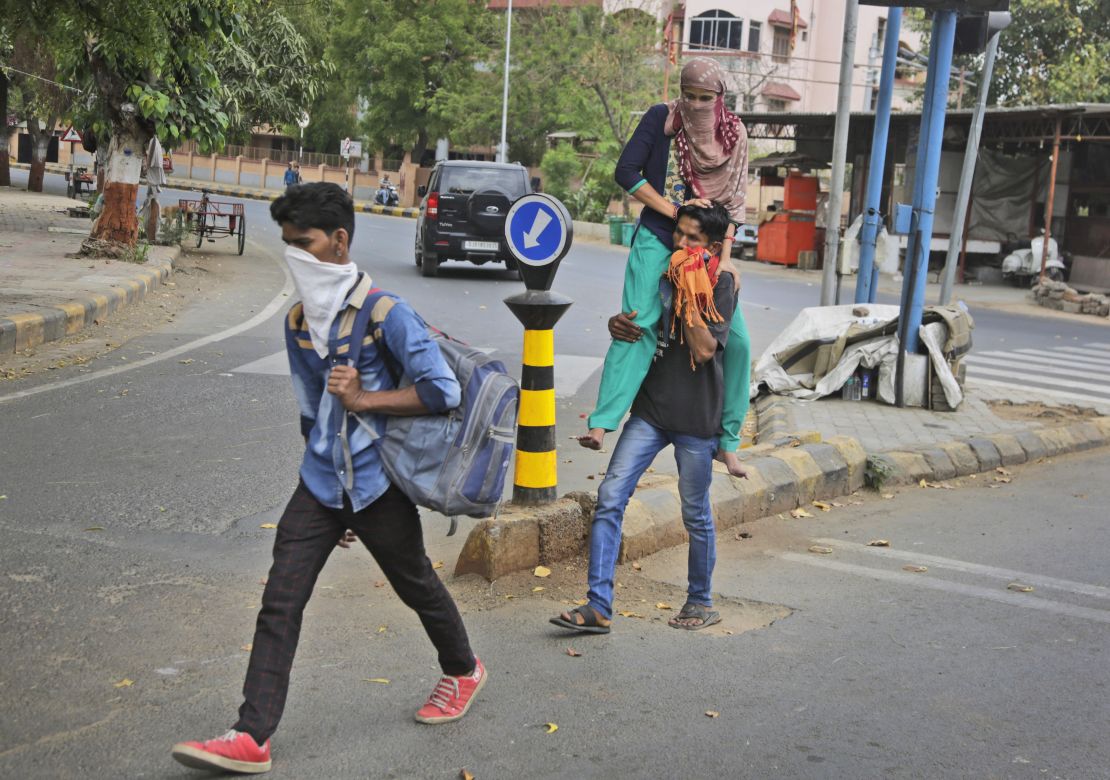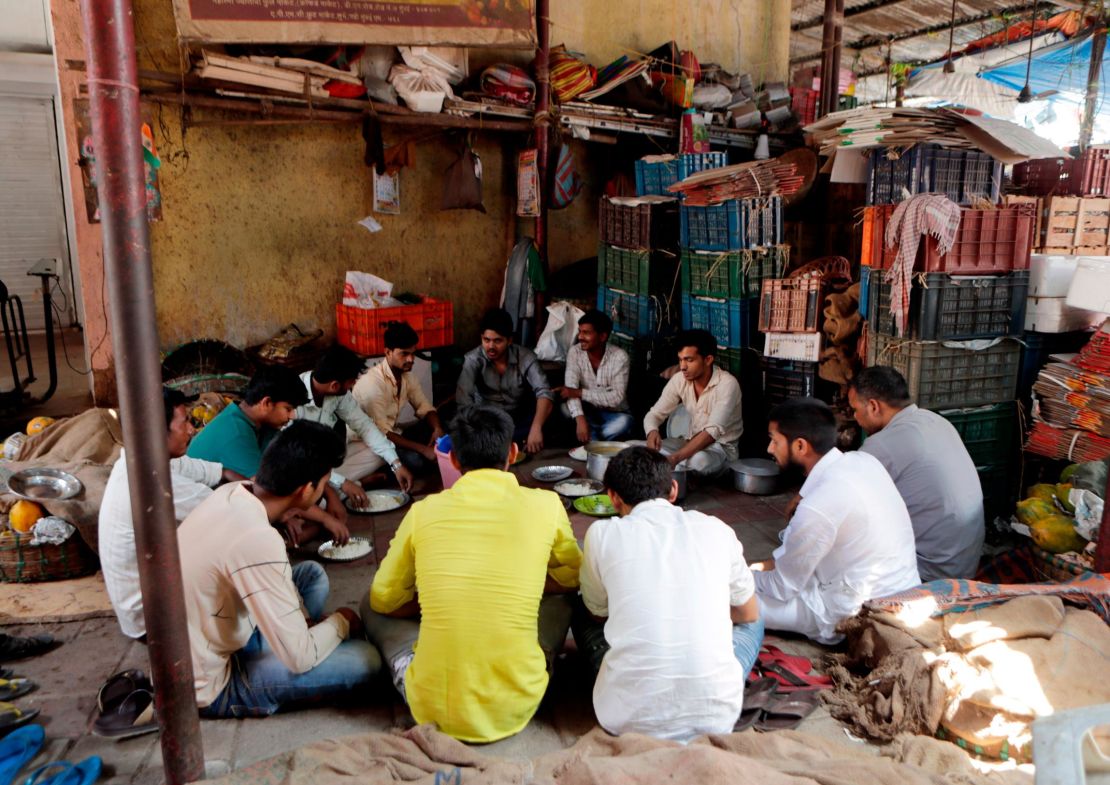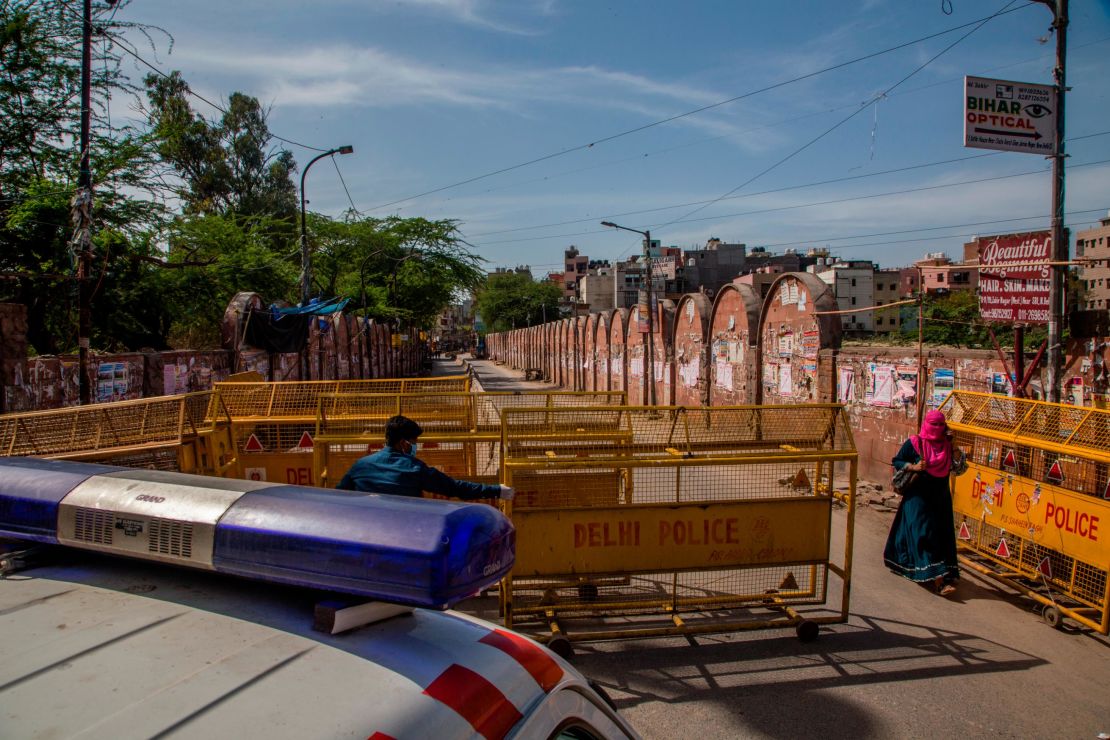Thousands of migrant workers are attempting to leave India’s major cities after a government lockdown designed to prevent a local epidemic of novel coronavirus left them without jobs or pay.
The potential mass migration may undermine attempts by Prime Minister Narendra Modi’s government to prevent the localized spread of the coronavirus, with some workers even attempting to make the journey on foot, due to widespread closures of public transport.
According to government statistics, every year more than nine million migrant workers move from India’s rural areas to large population centers to find work at construction sites or factories, sending money back to their home towns and villages.
But with those industries closed by the government lockdown, many have been left with little choice but to attempt the return journey home.
Migrant worker Bablu Ehrewal, 24, used to work at a mall construction site earning $7 a day (500 rupees). Construction stopped this week when the lockdown came into effect. Now he is stuck in a slum with 70 other migrant construction workers in the central Indian state of Madhya Pradesh and hasn’t been paid in 20 days.

Without money, he can’t afford food, and with the trains shut, his only option may be to walk home. “It is better than living here with nothing and starving to death,” he said of the choice.
This week the Indian government pledged $22 billion to support to migrant workers trapped without work far away from their homes, including the providing community kitchens and food deliveries.
“We have installed more than 12 thousand vehicles in the state to transport vegetables, milk, medicines and food grains from door to door,” Uttar Pradesh chief minister Yogi Adityanath said on his official Twitter Wednesday night.
“No person at night shelters, bus and railway stations … will stay hungry or thirsty,” he said.
But it is unclear whether the government aid has stopped the flood of migrant workers from major cities.
In Chennai alone on Sunday night, when the first 14-hour lockdown took place, local government figures revealed about 4,500 workers were stuck at the city’s railway station unable to return home.
About 1,700 went into relief shelters in the city. Another 2,800 are still unaccounted for as of Friday.

Lockdown in India
Large parts of the country have been locked down to prevent the spread of the novel coronavirus, which has killed 17 people so far, in a country of 1.3 billion.
As of Thursday, there were only 724 confirmed cases. In comparison, South Korea – which has a population of only 3.8% the size of India’s – has more than 9,200 cases.
Prime Minister Modi announced this week that all of India’s 36 states and territories would be shutdown until March 31, with only essential services such as supermarkets an hospitals remaining open.
“There is no other way to remain safe from the coronavirus,” Modi said in a televised address. “If we have to stop the spread, we have to break the cycle of infection.”

All shops, factories, workshops, markets and places of worship have been closed, interstate buses and metros have been suspended and construction work halted.
World Health Organization officials said at a press briefing on Monday that India had a major role to play in keeping the global pandemic as contained as possible.
“The future of this pandemic to a great extent will be determined by what happens in very large highly populated, dense populated countries. So it’s really, really important that India continues to take aggressive action,” said WHO Executive Director Michael Ryan.

Modi denounces evictions of doctors
India may still have fewer than 1,000 cases but the fear of pandemic has caused panic buying and attacks on front line medical staff.
Doctors and nurses in the capital New Delhi told CNN that they have been ostracized and discriminated against by their communities over fears that they could bring home the virus after work.
Some doctors have even been threatened with eviction or having their electricity cut off.
“Many doctors are now stranded on the roads with all their luggage, nowhere to go, across the country,” said one letter from the Resident Doctors’ Association of New Delhi’s All India Institute of Medical Sciences to the Union Home Minister Amit Shah.
Speaking over video conference Wednesday, Prime Minister Modi said that he would immediately speak to the police and law enforcement authorities to take “strict action” to protect medical staff.
“In this hour of crisis, doctors and nurses in white clothes are a form of God. They are putting themselves in danger to save us … Doctors, nurses and medical staff save our lives and we can never repay their debt,” he said.




















